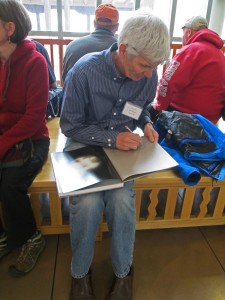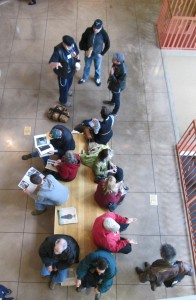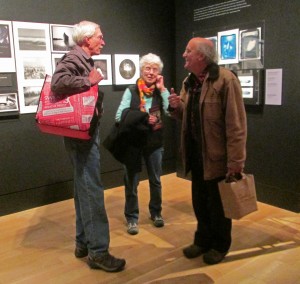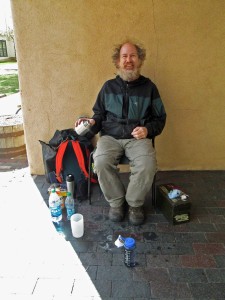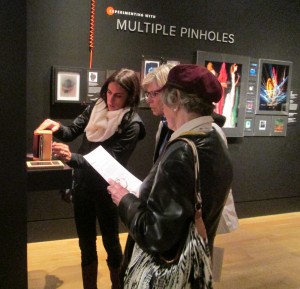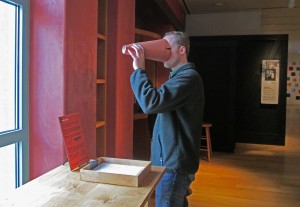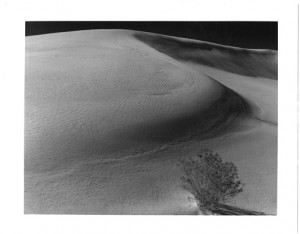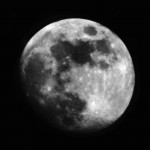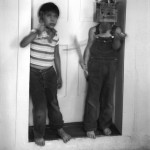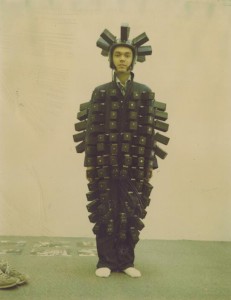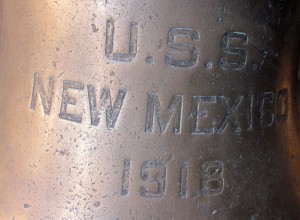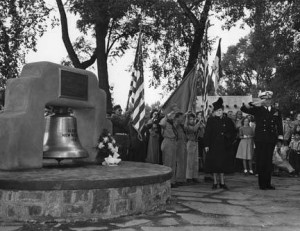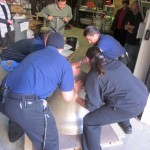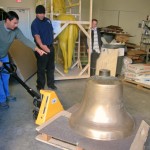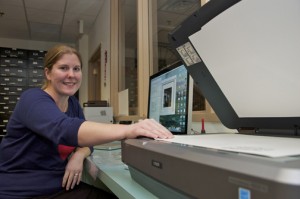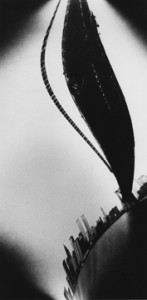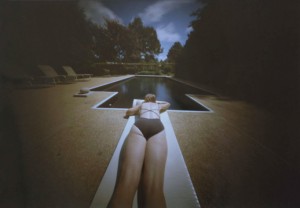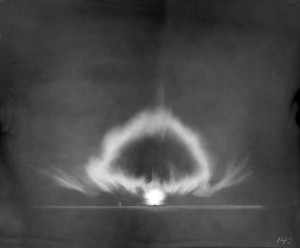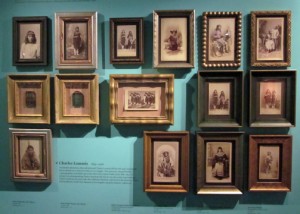“Fashioning New Mexico”
New museum’s premiere exhibition reveals
the history of the clothes we wore

Welcome to the latest installment of our media-release series, “Telling New Mexico: Stories from Then and Now.” See the links below for previous releases, along with information about obtaining photographs to accompany your coverage.

Flamenco Dress

Estella Bestero (Moore) with her mother,
Florence (Wreford) Bestero, undated

Wedding Dress

Unidentified boy in a cowboy
outfit, undated

Flapper Dresses

San Juan Pueblo child
in ceremonial dress, undated
|
Santa Fe – Life’s passages carry layers of meaning and memory – the foods we eat, the songs we sing, the clothes we wear. The ways in which our predecessors chose to clothe themselves – for a baptism, a prom, a war, or an opera opening – have been collected by the New Mexico History Museum for 100 years. As part of the Museum’s grand opening May 24, many of those outfits are, shall we say, coming out of the closet.
Fashioning New Mexico, the premiere exhibition in the Museum’s Changing Gallery, explores what our clothes say about us and what they mean to us. Some of the celebratory events depicted in it are singular to New Mexico, such as fiestas and Native American ceremonies. Others are the classic passages that form the basis of our lives and of the tales we have told since the earliest campfire was lit: a child’s birth, coming of age, marriage, anniversaries, ascents to power and going to war.
The Museum’s collection of nearly 4,000 costumes and accessories, with many pieces dating from the 1830s to the 1970s, has long lacked the space it takes for a proper exhibit. The opening of the Museum’s second-floor, 5,700-square-foot Changing Gallery finally makes it possible.
To senior curator Louise Stiver, it’s both a celebration and a swan song, as she unveils her final exhibition.
“This is the first time for the Museum to focus on our collection of costumes and accessories,” she said. “A number of the items in the collection represent celebrations that occurred here in New Mexico – from weddings to going to the opera to entering military service. There’s a little bit of everything for people to see.”
But, she cautions, “this is not a fashion show.”
“Rather, it will focus on how people fashioned their lives. Some clothing might stand alone, while others will be part of a vignette that might include furniture, portraits, weaponry, accessories, historical documents and other props to tell the story.”
Other features include a high-seated “penny farthing” bicycle, and interactive features where a visitor can practice tying a corset, using the secret language of fans or virtually “trying on” some of the outfits in the exhibit. Student-interns from New Mexico Highlands University are preparing a station that uses computerized images on a mirror that let visitors virtually “try on” some of the outfits in the exhibition.
What’s coming out of the closet? Plenty – about 350 items, including a dozen 19th– and 20th-century wedding gowns, flapper dresses, flamenco outfits, WWI uniforms, inaugural ballgowns and an assortment of underwear through the centuries. Thirty of the Museum’s classic fans will reveal a time when delicate painting and embroidery turned a utilitarian item into art.
Donors through the years have included the heirs of the Harroun, Manderfield and Armijo families of Santa Fe, the McMillans of Socorro, the Jaramillos from northern New Mexico, and the McDonalds of Carrizozo, to name a few.
The pieces cover modern history as well, including a turquoise outfit recalling the grandeur of Dangerous Liaisons-era France. The outfit, worn by Santa Fe artist Paul Stephen Valdez to the Equality New Mexico Gala in 2008, was loaned by him for this special exhibition.
Conservator Rebecca Tinkham has worked on every costume in the exhibition, painstakingly repairing the rips and frays of time, a task that prior to now also made displaying the items problematic. With the Museum’s climate-controlled galleries, fragile fabrics can withstand the rigors of exhibition.
Besides mending seams, Tinkham has found herself working on corsets, hoops, bustles, pantaloons and petticoats.
“These days, the clothes fit the body,” she said. “But for a good part of history, the body was made to fit the clothes with bustles, hoops, metal bust improvers.”
One of the things that most impressed her about the collection was how well New Mexicans dressed.
“A lot of the clothes are just so pretty to look at,” Tinkham said. “There were a lot of people in New Mexico who did dress to style. They were definitely stylish for the period.”
Those period-specific styles are also revealed in the Museum’s archival photos accompanying the exhibit, which buttress the notion of these being the clothes New Mexicans lived, worked and played in.
As they have for the last century, the collection of artifacts and photographs detailing our stylish ways would have continued. But without the new exhibition gallery, the wait to see them would have been even longer.
“The New Mexico History Museum opens a new chapter in the life of the Palace of the Governors,” Stiver said. “This new gallery allows us to expand our Museum’s mission and display exceptional examples from the Palace’s collections never before seen by the public.”
The New Mexico History Museum includes interactive multimedia displays, hands-on exhibits, and vivid stories of real New Mexicans. As a 96,000-square-foot extension of the Palace of the Governors – itself a story of New Mexico’s past and present in a 400-year-old building – the New Mexico History Museum anchors itself in the historic Santa Fe Plaza and offers a sampling of the people and the legends to be found throughout the state. Get into it – define your place in history and in fashion.
For more information about the New Mexico History Museum, including a selection of user-ready high-resolution photographs, log onto http://media.museumofnewmexico.org/nmhm. More than 8,000 additional, high-resolution photographs illustrating the history of New Mexico are available by keyword search at www.palaceofthegovernors.org (click on “Photo Archives” then on “Digitized Collections”). Most requests for scans from this site can be delivered the same day, and usage is free for publicity purposes only.

